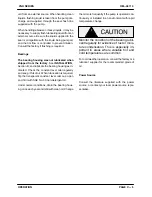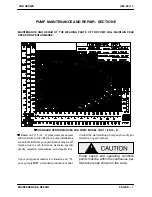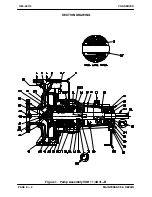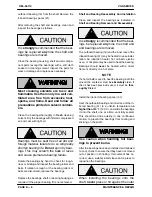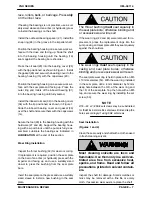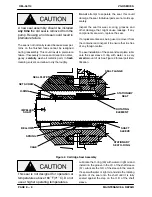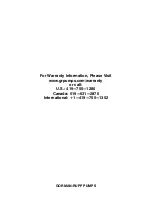
OM-06114
VGH SERIES
TROUBLESHOOTING
PAGE D - 2
Table D‐1 Troubleshooting Chart (Continued)
TROUBLE
POSSIBLE CAUSE
PROBABLE REMEDY
PUMP STOPS OR FAILS
TO DELIVER RATED
FLOW OR PRESSURE
(cont.)
Impeller or other wearing parts worn
or damaged.
Leaking or worn seal or pump gas
ket.
Impeller clogged.
Pump running backwards (electric
motor driven models).
Suction lift or discharge head too
high.
Liquid solution too thick.
Replace worn or damaged parts.
Check that impeller is properly cen
tered and rotates freely.
Check pump vacuum. Replace leak
ing or worn seal or gasket.
Free impeller of debris.
Check direction of rotation. Correct
3‐phase wiring by interchanging any
two motor leads at control box. (See
Pump Rotation
in the Installation
and Operations Manual.)
Check piping installation and install
bypass line if needed. See
INSTAL
LATION
in the Installation and Op
erations manual.
Dilute if possible.
PUMP REQUIRES TOO
MUCH POWER
Pump speed too high.
Discharge head too low.
Liquid solution too thick.
Impeller jammed due to debris or in
sufficient clearance.
Check governor setting (engine driv
en models).
Adjust discharge valve.
Dilute if possible.
Disassemble pump and check impel
ler.
PUMP CLOGS
FREQUENTLY
Discharge flow too slow.
Suction check valve or foot valve
clogged or binding.
Open discharge valve filly to in
crease flow rate, and run power
source at maximum governed
speed.
Clean valve.
EXCESSIVE NOISE
Cavitation in pump.
Pumping entrained air.
Pump or drive not securely
mounted.
Impeller clogged or damaged.
Reduce suction lift and/or friction
losses in suction line. Record vacu
um and pressure gauge readings
and consult local representative or
factory.
Locate and eliminate source of air
bubble.
Secure mounting hardware.
Clean out debris; replace damaged
parts.













